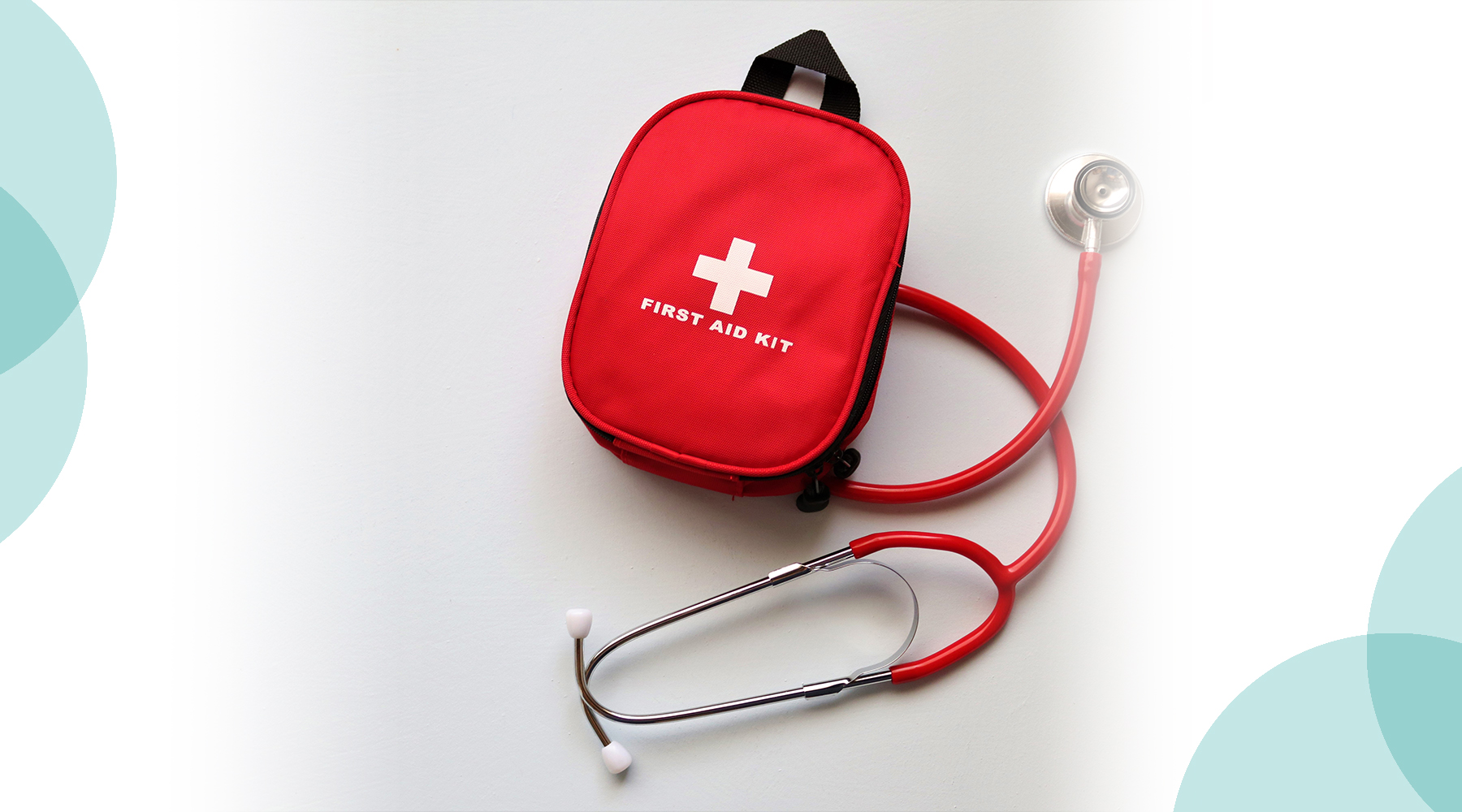You’re sitting down to a nice meal at a restaurant. It’s a slow night, so most of the tables around you are empty, except for one booth where an old man is eating by himself while watching an exciting football game on TV. All of a sudden, he puts his hand to his chest and starts sliding out of his seat. It looks like he’s having a heart attack and going into cardiac arrest. The waitstaff don’t know what they should do – do you?
Hopefully, you’ll never be in this situation and you’ll never need to know how to do CPR. But knowing what to do in a medical emergency could save someone’s life. Plus, if you’re working on making 2022 your best year, learning basic practical first aid is a great start!
So, what should you do in an emergency medical situation? That depends on the exact scenario and if there are any medical professionals already on the scene. To be prepared, learn about the basics of first-aid care and make sure you have a fully-stocked first-aid kit available. Take a look at what you should do before providing first-aid care, the steps you should take in these situations, and what you need in your kit.
The Importance of First-Aid Consent
First of all, it’s extremely important to receive consent from the person to whom you need to give care. However, if that person is unconscious or cannot move their limbs to give consent, you do not always have to obtain consent – but you always need to try.
After trying to obtain consent and consulting with anyone related to that individual, you can perform emergency first aid, especially if the situation is life-threatening. Remember to always check and see if a medical professional is nearby first.
Performing CPR
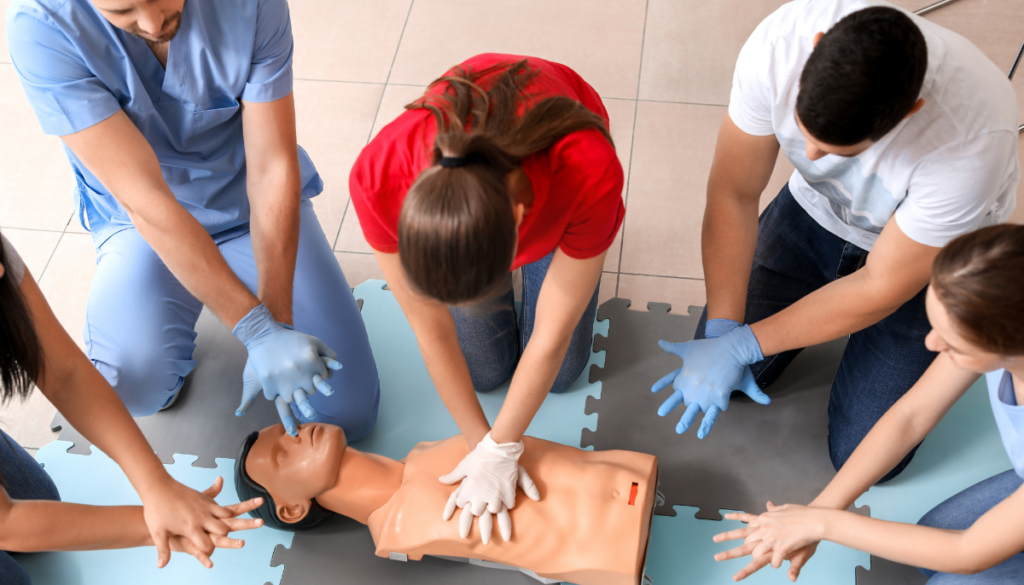
In the scenario at the beginning of this post, the elderly man eating his dinner would need CPR if he went into cardiac arrest. You can tell that someone has gone into cardiac arrest if they are unresponsive even when you shake them, and they aren’t breathing or are only gasping.
CPR is the abbreviation for cardiopulmonary resuscitation. The most effective way to learn CPR is by taking an in-person class where you learn the CPR techniques for both adults and infants.
If you are under pressure, it can be tricky to give effective CPR. Always check to see if there is a medical professional present before giving emergency medical care. When there is no medical professional available, remember to try to obtain consent, call 911, and rely on your training to help you assist the person in need.
Identifying a Possible Concussion
It’s a beautiful day at the park. You’re having a picnic in the warm sunshine with your friend when, out of nowhere, a soccer ball flies through the air towards you and hits your friend directly in the head. After the impact, they appear dazed and disoriented. What do you do?
When you think someone may have a concussion, give them the best assistance that you can. Check their pupils for dilation. See if they can speak coherently and ask them if they’re experiencing dizziness. If any of these symptoms are present, and even if they aren’t present but you’re concerned, seek care from a medical professional.
Giving the Heimlich Maneuver
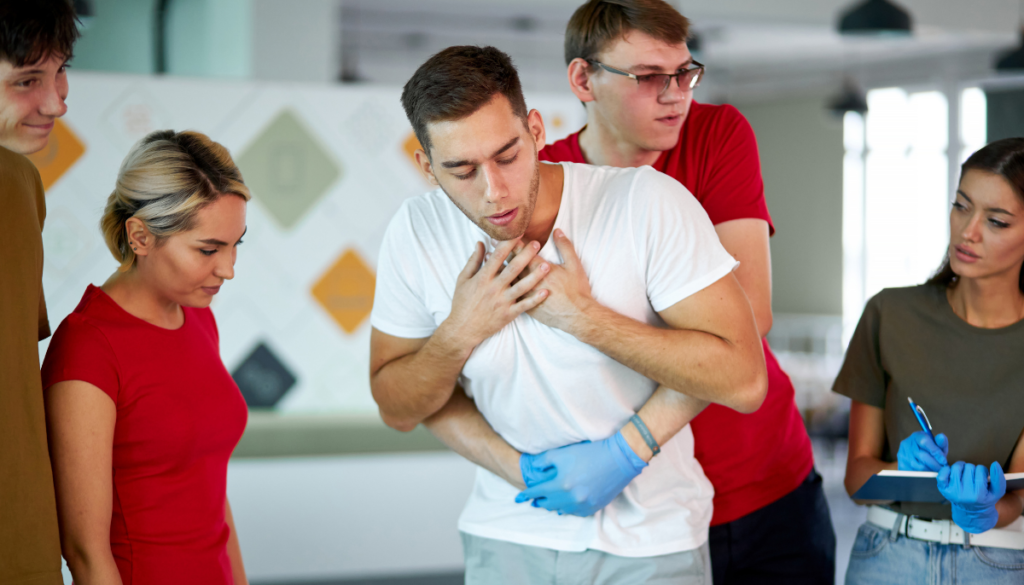
It’s time for date night! Your partner is trying a new dish at an upscale restaurant when suddenly they start chocking. According to the Mayo Clinic, “Because choking cuts off oxygen to the brain, give first aid as quickly as possible.”
First, give back blows to the person and then perform the Heimlich maneuver. To give a back blow, you stand to the side and behind the choking person, bend them at the waist, and then, with the heel of your hand, give five back blows between their shoulder blades.
For the Heimlich maneuver, you should stand behind the choking person, reach your arm around them, make a first with one hand above their belly button, grasp your fist with your other hand, and then give a fast, upward thrust between 6-10 times.
Remember, you should obtain consent from the choking person if you can and always have someone else call 911 for help while you are giving first aid.
Treating Burns
It’s Christmas and you’re making hot chocolate on the stove with your nephew. All of a sudden, he starts screaming – he stuck his finger in the hot chocolate too and burned it. and now He’s clearly in pain. What do you do?
For a minor burn, apply a topical burn cream and cover the area with loose gauze. More serious second-degree burns should be run under cool water before applying cream and covering with gauze. Third-degree burns are extremely serious and must be treated by a medical professional. To treat the burn at home first, follow the same steps that you would for a second-degree burn.
Setting an Injured Body Part in a Splint
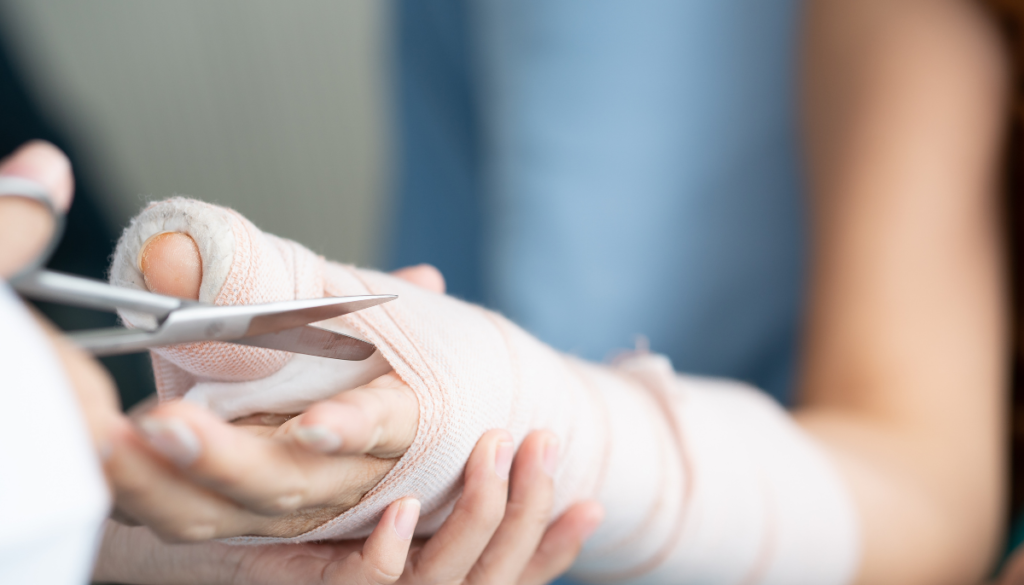
You’re hiking with your partner in the woods when they trip over a stone they didn’t see and fall hard, forcefully hitting their arm on a large rock. The pain is written all over their face and you know that you have to get to help fast, but they don’t think they can move their arm at all and they can’t walk without getting up off the ground. What do you do?
Setting the arm in a splint will help stabilize it until you can get to a medical facility where they can check for broken bones. A rolled-up newspaper or towel, and a heavy stick, board, or plank, will all help you make the splint.
Check for bleeding first. Don’t try to move the limb too much because you may end up making it worse. Put the rigid support (the stick or board, for example) under the affected area and then use the cloth to secure the rigid support to the limb that’s been injured. Then, seek emergency medical help as soon as possible.
Stopping Bleeding
If you’re like me and the sight of blood makes you queasy, then this will be the toughest one on this list. Car accidents cause many terrible injuries every year and often result in bleeding injuries. If you’re ever in a car accident or you witness one, or if you’re ever in a situation where someone is injured and starts bleeding, knowing how to stop that bleeding could save their life.
The first step is to apply pressure to the wound to stop the bleeding. If using your hands or knee alone doesn’t stop the flow of blood, then you will need to make a tourniquet, which you can do out of improvised materials like a belt or a t-shirt. Check for a first aid kit before you start improvising. As always, make sure that someone has called 911.
Treating a Person Who Fainted

It’s alarming when you’re near someone who, out of nowhere, suddenly faints. Don’t let the shock of the situation prevent you from assisting a person who may need your help.
First, move the person who fainted so that they are on their back. Check to make sure that they are breathing. If they are, then you should raise their legs above their heart level, which is about 1 foot. If they are wearing any constrictive clothing like belts or tight collars, loosen that clothing.
If you checked and the individual wasn’t breathing, then you should immediately have someone call 911. Then, begin giving CPR.
Allergic Reaction
Allergies are dangerous and can even be life-threatening. Whether someone with a bee allergy is stung or someone with a food allergy accidentally eats a product with peanuts in it, the consequences could be disastrous.
If you witness a serious allergic reaction, direct someone to call 911 and start looking for the allergic person’s EpiPen. Many people with serious allergies carry an EpiPen with them and can deliver the shot they need on their own. However, if the reaction was particularly severe, you may need to help them by giving them the EpiPen shot. Push the autoinjector into their thigh as directed on the EpiPen.
After the shot, the individual needs to rest while the EpiPen does its work. Ask the person to lie on their back (but if they are choking or bleeding from the mouth, then you should position them on their side) and then loosen tight clothing. They should not have anything to drink. If they stop breathing, it’s time to give them CPR.
Stocking Your First-Aid Kit
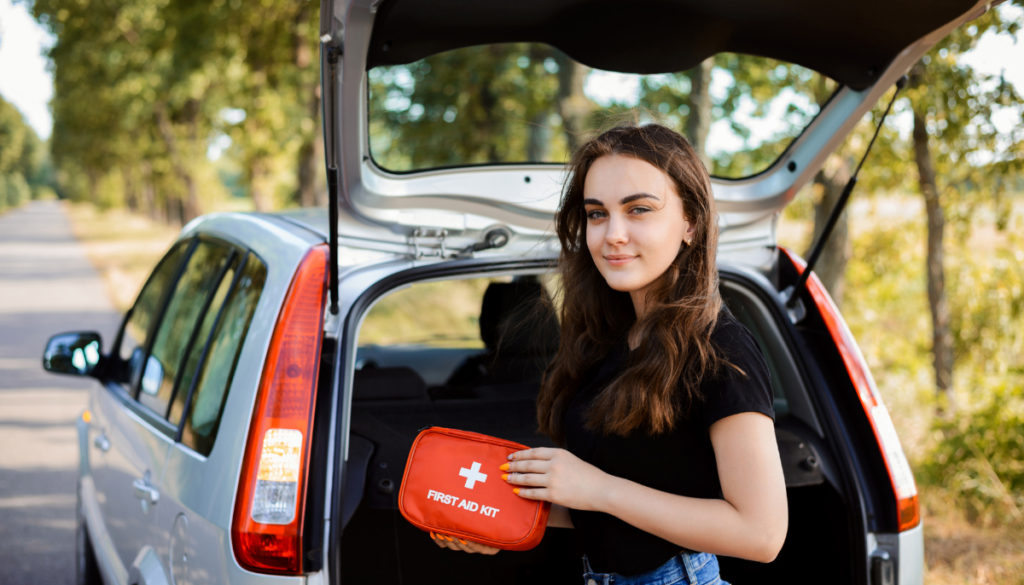
It’s a smart idea to be prepared for as many situations as possible by fully stocking your first-aid kit. The American Red Cross suggests that individuals carry:
- absorbent compress dressings
- bandages
- cloth tape
- antibiotic ointment packets
- aspirin
- emergency blanket
- breathing barrier
- tweezers
- triangular bandages
- oral thermometer
- nonlatex gloves
- instant cold compress
- antispetic wipes
The full list includes more supplies and how many supplies you should stock for a family of four.
You never know when a friend or family member, or even your partner, may start choking during dinner, cut themselves badly, or end up in another medical emergency. Remember – learning first aid could save someone’s life.

